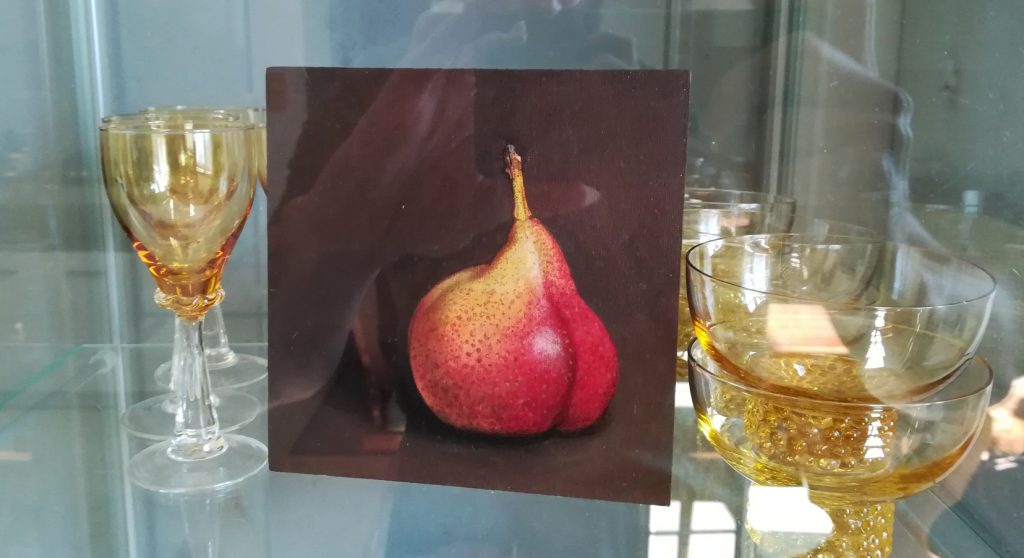
When I paint from reference, most of the time it’s from photos displayed on my computer monitor. There are quite many benefits to using a photo versus the real thing. Living beings barely staying still long enough for a camera to capture won’t make an exception for an artist, regardless of their skill or fame. Unless you’re a fast worker, the light of day too will change on you and that scenery’s colours you are trying to capture along with it. If you cut open some fruit for that extra juicy still life, you better make sure to finish it before the mold hears about it. Even all that aside, at the very least you would be limited to painting studies from things within your reach, which is already a big reason by itself.
That said, using photo reference can have downsides too. Depending on the lens of the camera there might be distortion and ultimately it is a flat image which you perceive differently than looking at a three dimensional scene. More so, if you ever had one of those moments in a day where the light is just really weird and otherworldly outside, that odd eerie green or purple and you tried to capture it with a camera? That mood just doesn’t transmit, but you might be able to capture it in a painting (if you’re skilled enough anyway).
Ultimately photography as a helper can range from necessity to a tool of comfort, but either way it is a real boon I’m very glad we have such easy access to. When I spotted a perfect specimen amongst a group of pears in my mum’s fruit bowl however, I knew this was the right moment to have a go at painting from life. The pear was fresh enough to last at least a few days longer and small enough to set up on the table right next to my easel, using the same lighting.
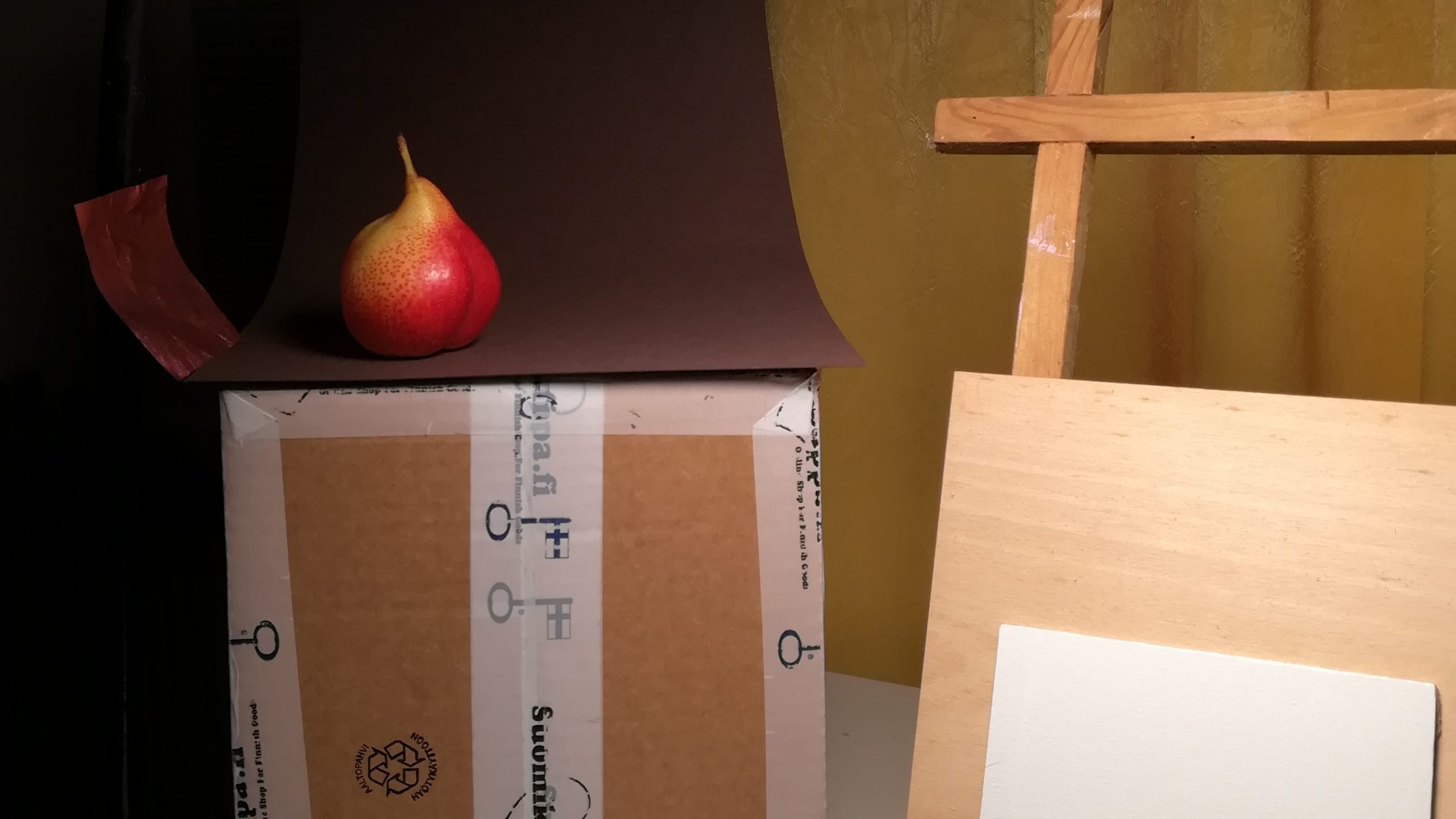
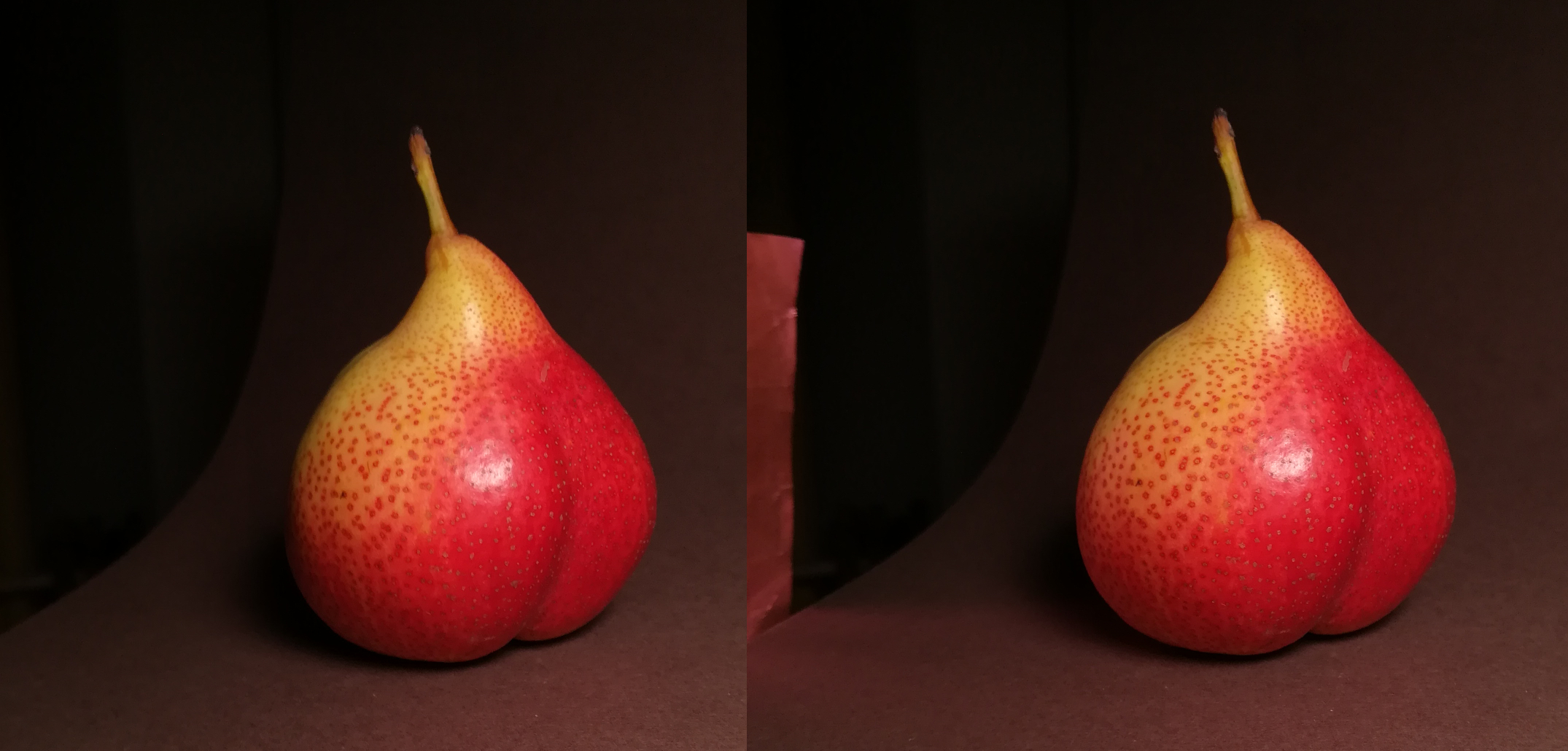
The first thing I learned is that this pear is of the variety Forelle (German for trout), thanks to its colours and dots resembling such. The second was that opposed to a photograph of a fruit, the real thing will smell increasingly delicious, constantly tempting you to eat it while you paint. Still not sure if that gets filed under benefits. A definite positive was not relying on a screen for a change and being away from the computer. Just the paint, the pear and me.
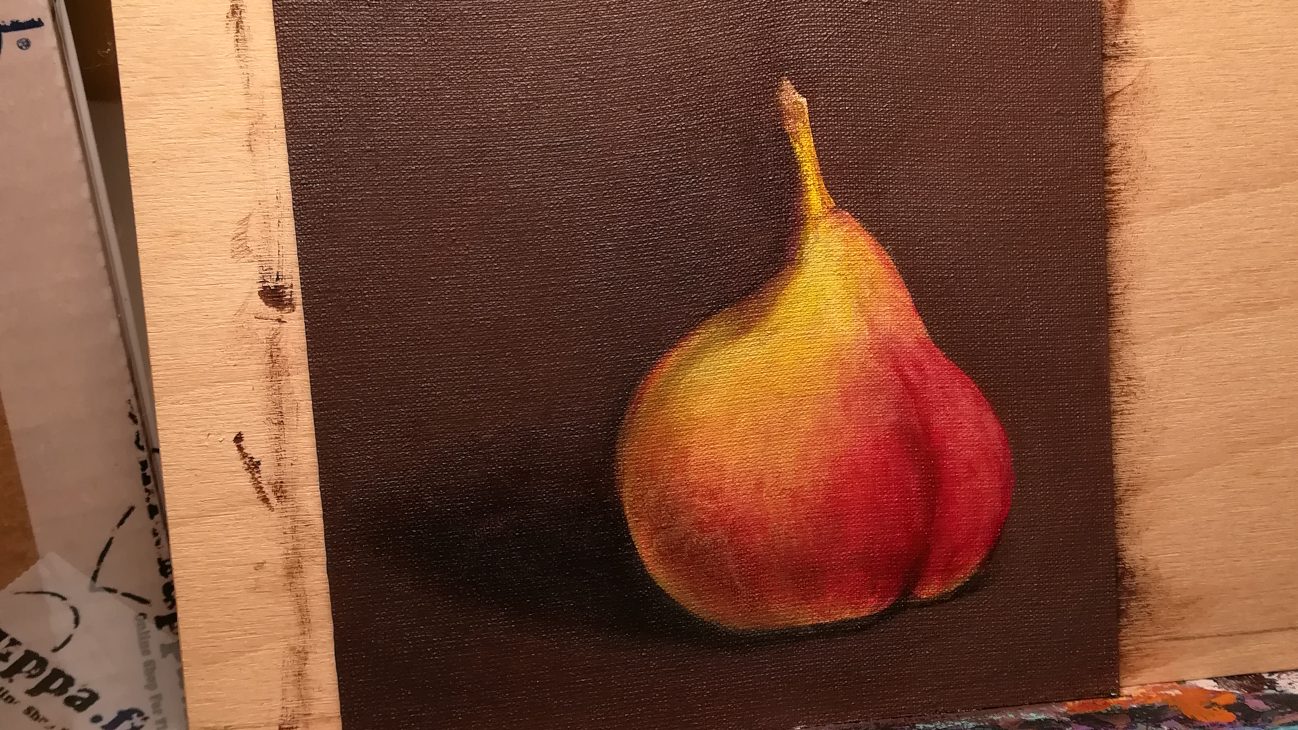
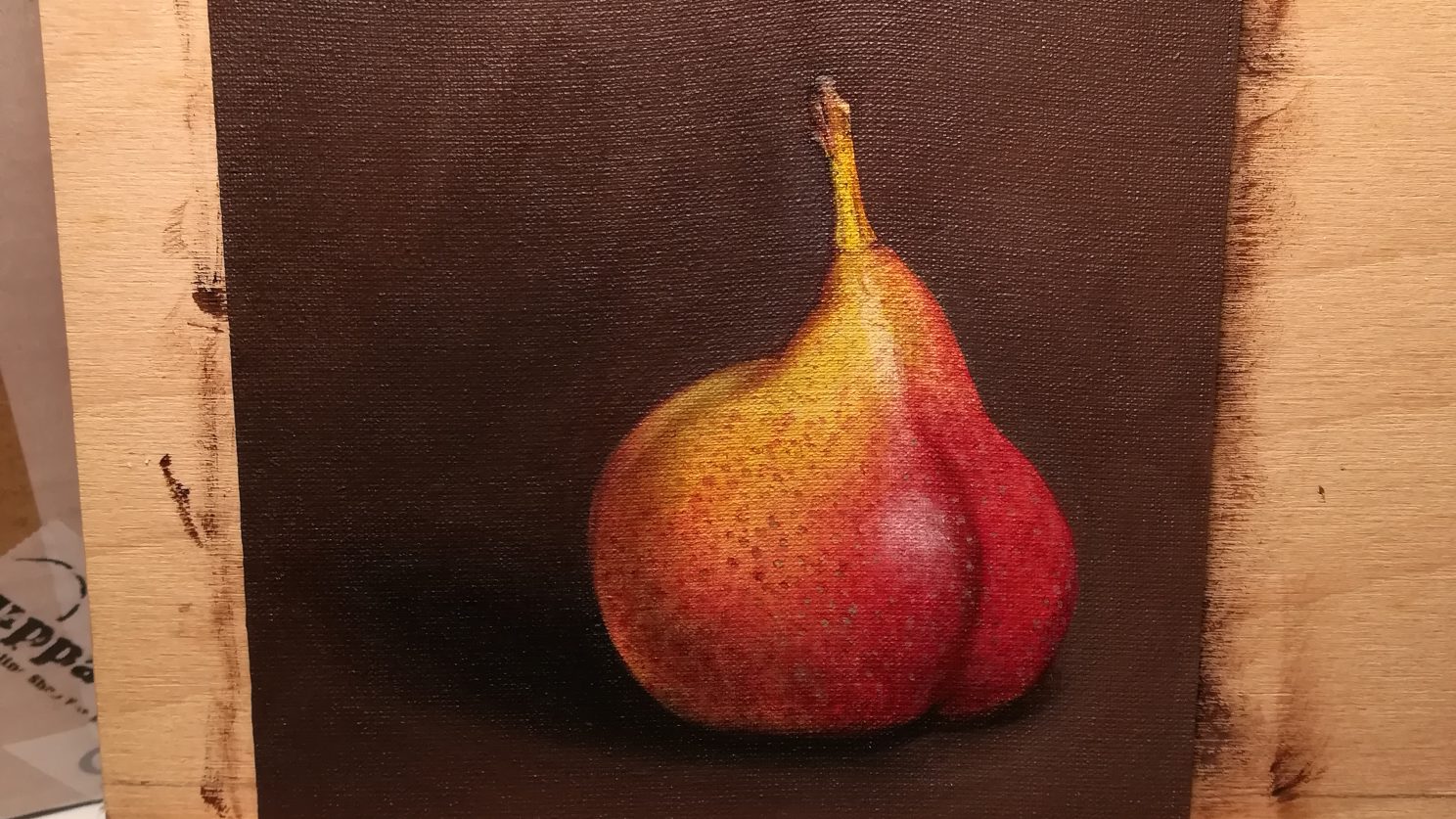
After finishing and pondering, my current takeaway from comparing the two types of reference is that while I tend to skew my subjects when working from photos, I seem to have “unwrapped” the pear, making it a little wider. Which makes sense considering I had it pretty close and slight shifts in my position would have had a relatively big effect on my view of it, with horizontal movement happening more when sitting than ups and downs. In this case it wasn’t something I felt the need to correct, but instead a fitting direction to take. To make a shapely pear even more shapely. After all, the best portraits are the ones that flatter and push good qualities just a little further for that extra satisfaction.
Another important case concerning the difference between the real thing and a photo of it, is the painting itself. It is incredibly hard to take a picture of traditional artwork that is accurate, with colours, texture and sheen all differing in various lighting conditions or angles. (To not say anything of the scanner’s or camera sensor’s capabilities or the device the person is viewing those photos on.) Which is especially troublesome if you want to offer a truthful representation for a possible buyer and prevent any sort of disappointment.
Ultimately I reckon the best I can do is offer a range of photos showing the painting in different settings and hope that in person, it will not disappoint, but satisfy or even impress.
And now I will leave you with said range of photos and this link to the sales listing, in case the cheeky pear jumped into your heart like it did mine and you want to claim it for yourself.
P.S.: Do not leave paintings in direct sunlight, this was done for presentation reasons only.
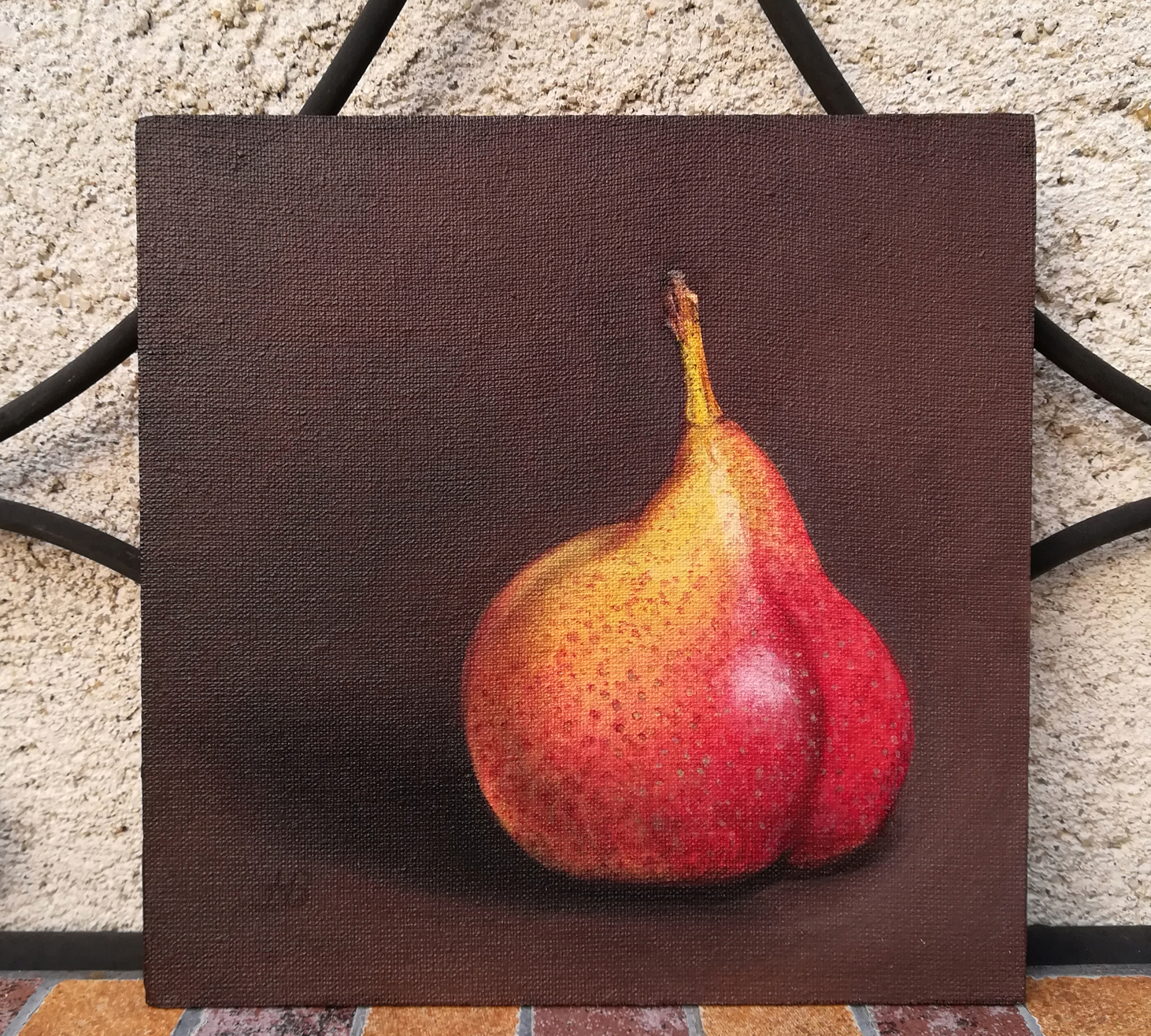
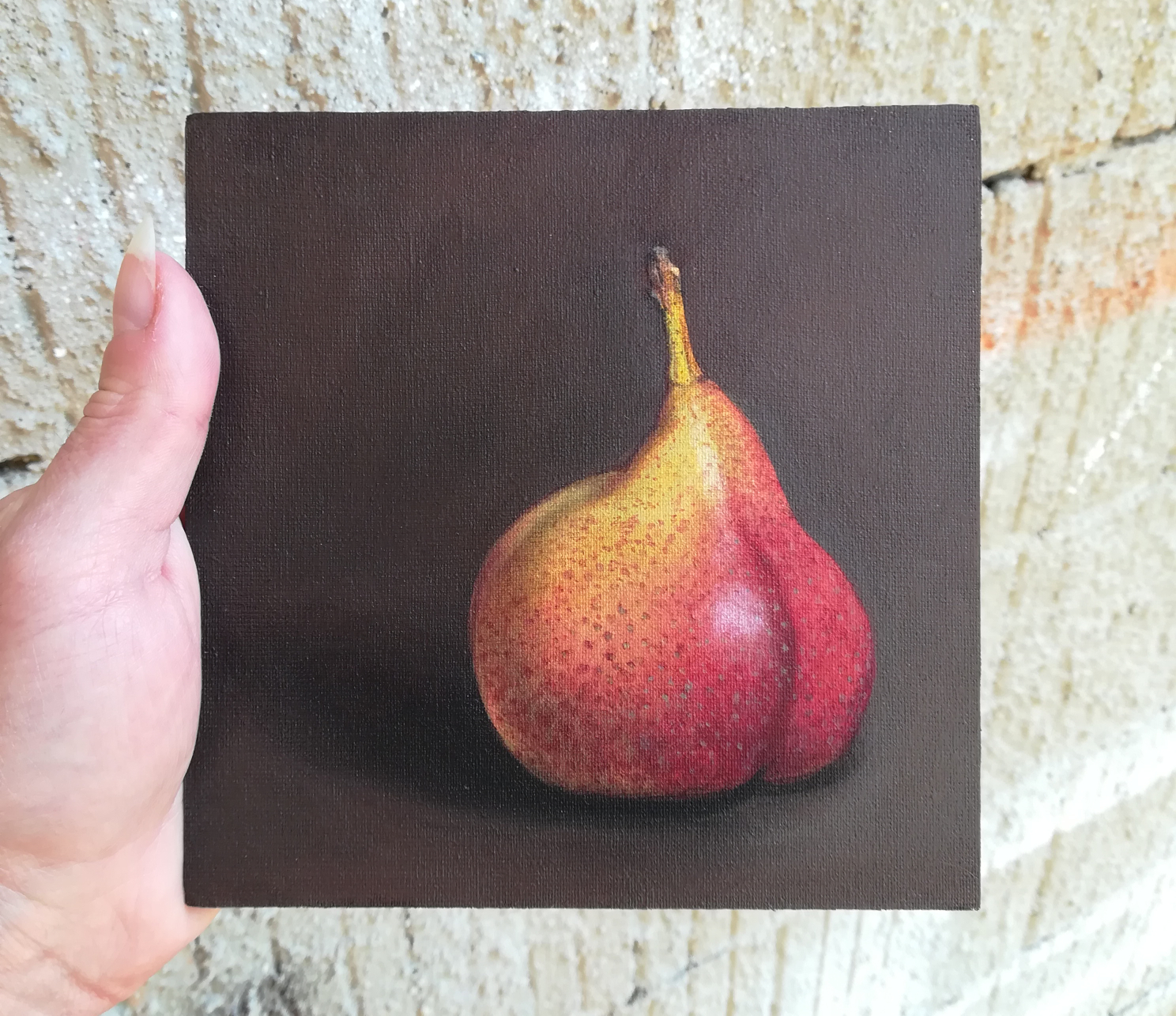
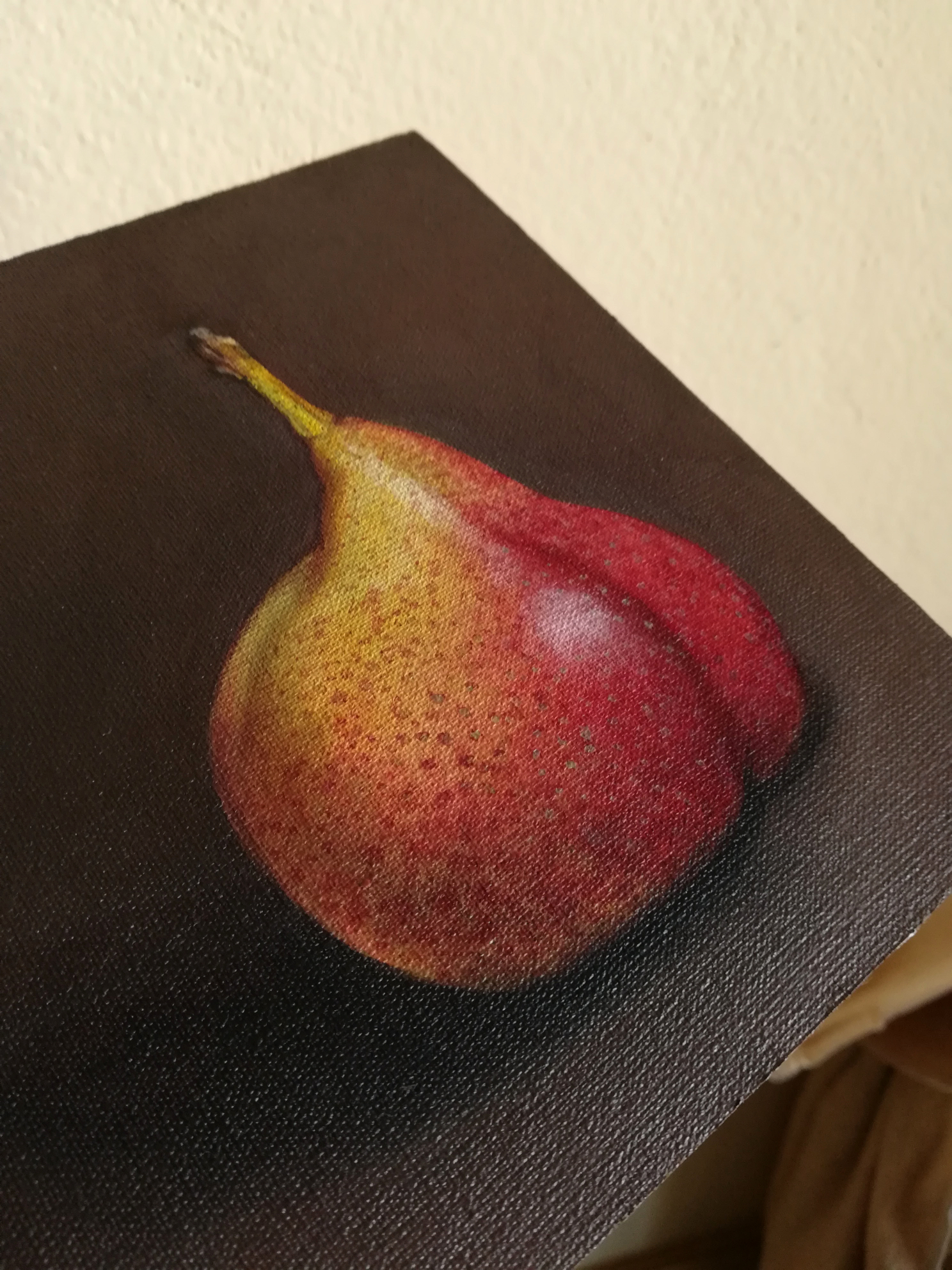
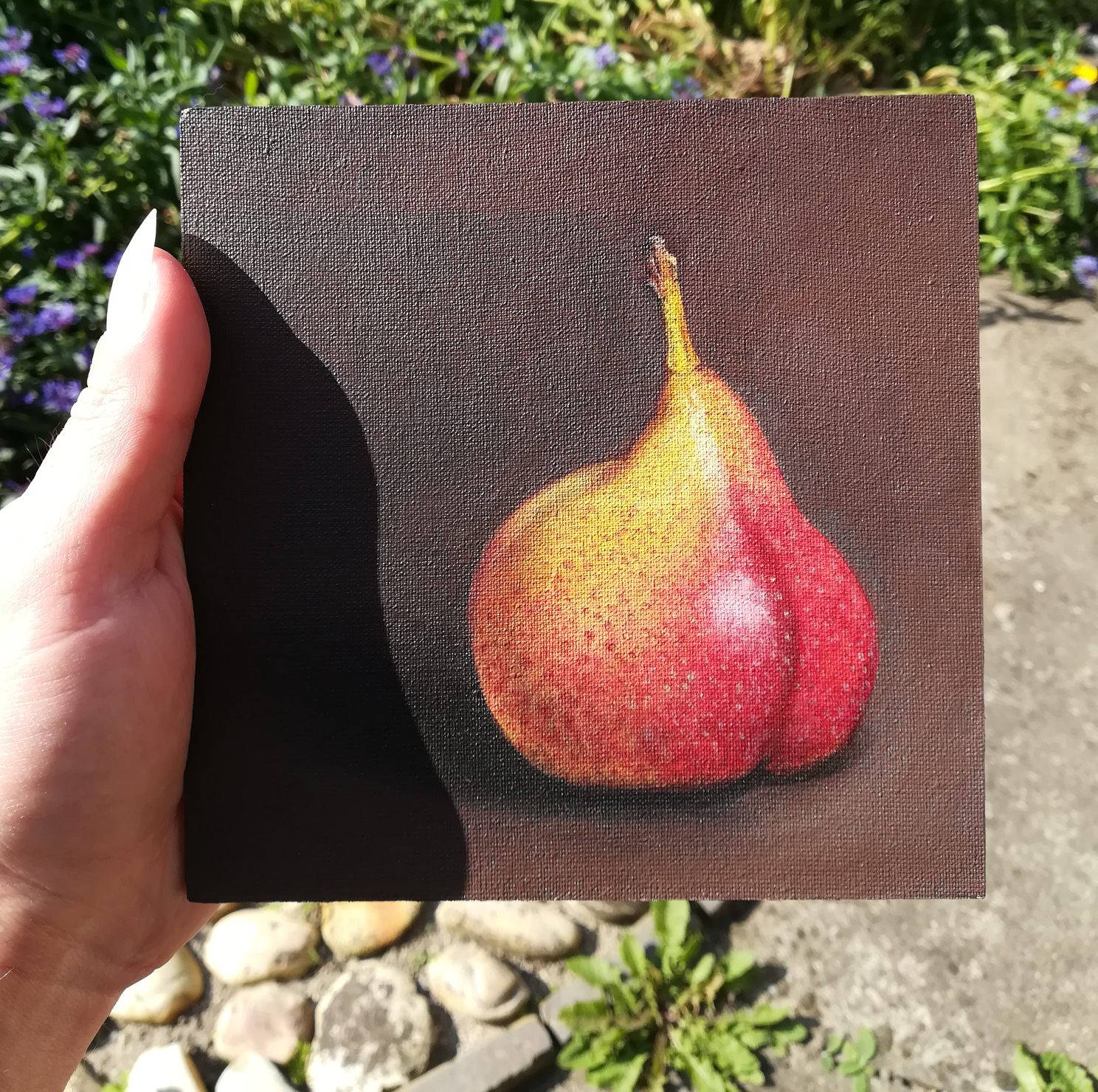
If you enjoyed this article and would like me to write more of its kind, you can support and allow me to do just that over on ko-fi via that fancy floating “support me” button on the left or go and buy this painting here.
Thank you,
Horst-Peter